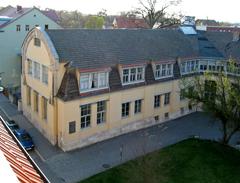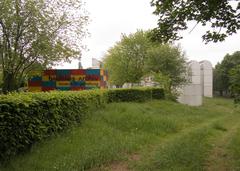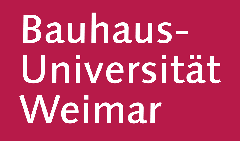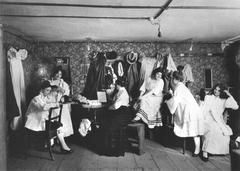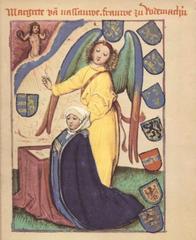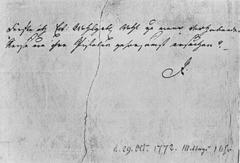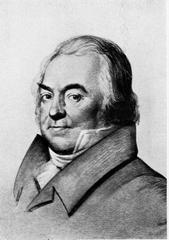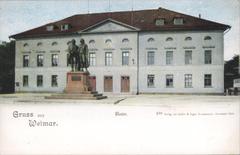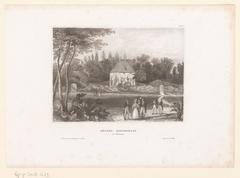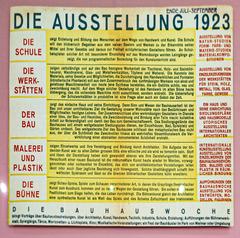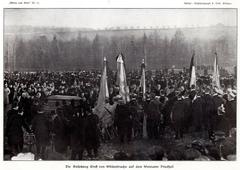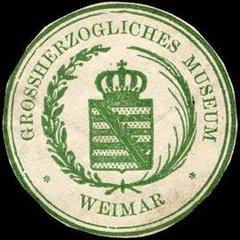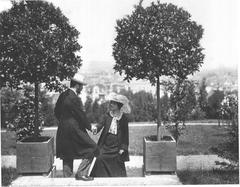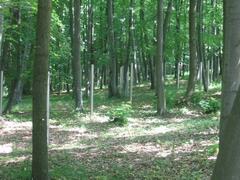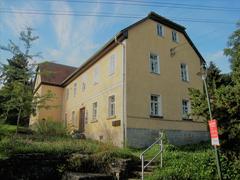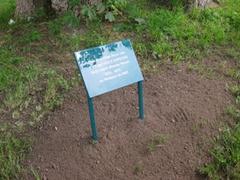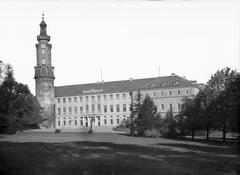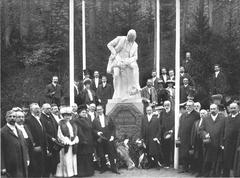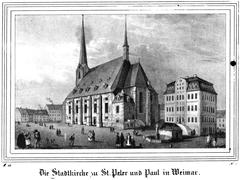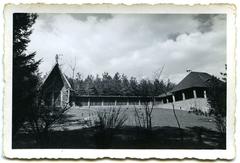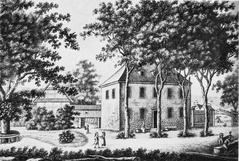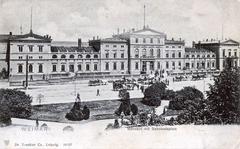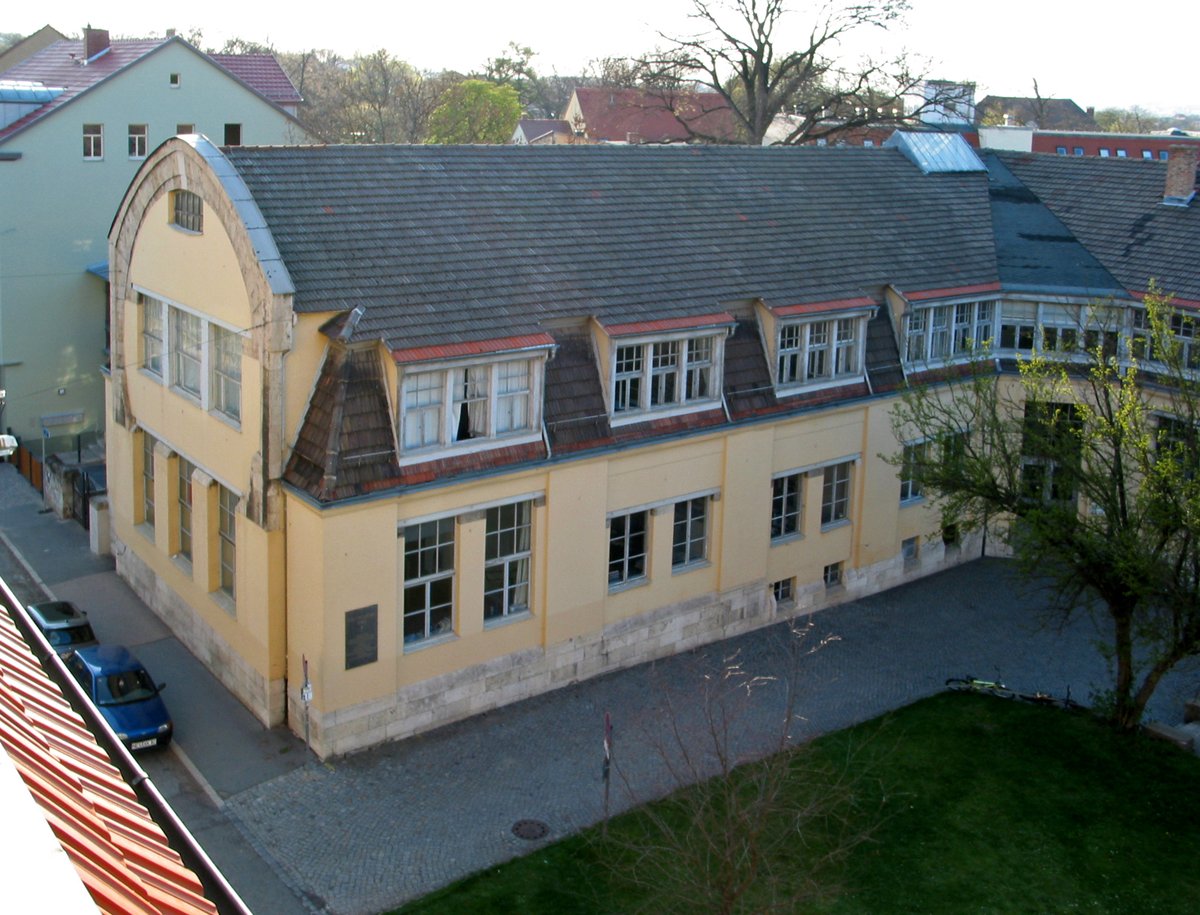
Arts and Crafts School Weimar: Visiting Hours, Tickets, and History Guide
Date: 14/06/2025
Introduction
Located in the heart of Weimar, Germany, the Arts and Crafts School—Kunstgewerbeschule—stands as a cornerstone in the history of modern art, design, and architecture. Established in 1860 and later shaped by the visionary architect Henry van de Velde, the institution’s legacy paved the way for the Bauhaus movement, which would profoundly influence design education worldwide. Today, visitors can explore the renowned Van de Velde Building and other UNESCO-listed Bauhaus sites, delving into their historical significance and architectural beauty.
This guide provides a detailed overview of the Arts and Crafts School’s history, practical information on visiting hours and tickets, highlights of architectural and cultural significance, and expert tips for making the most of your Weimar experience. Whether you’re an architecture aficionado, a history enthusiast, or a traveler keen on cultural heritage, this resource will help you plan a memorable visit to one of Germany’s most influential artistic sites. For the latest information on hours, tours, and special events, always check the Bauhaus-Universität Weimar website.
(Vielfalt der Moderne; Smithsonian Magazine)
Table of Contents
- Introduction
- Historical Overview
- Visitor Information
- Architectural and Cultural Significance
- Notable Figures
- Frequently Asked Questions (FAQ)
- Plan Your Visit
- Summary and Recommendations
- References
Historical Overview
Origins and Early Development (1860–1910)
Founded as the Grand-Ducal Saxon Art School in 1860, the institution quickly became a hub for creative innovation in Weimar. Its progressive approach enabled students to select professors, fostering an environment of experimentation and artistic freedom. Over the decades, it attracted renowned artists and contributed significantly to Weimar’s cultural renaissance.
The Rise of Applied Arts (1902–1915)
In 1902, Belgian designer Henry van de Velde was appointed director, bringing a revolutionary vision that integrated fine arts, crafts, and industry. Under his leadership, the Arts and Crafts School (Kunstgewerbeschule) was established in 1908, and the campus was expanded with the iconic Van de Velde Building. His design philosophy emphasized holistic unity—every detail, from furniture to fixtures, was harmonized within the architectural whole.
Institutional Mergers and Path to Bauhaus (1910–1919)
A 1910 merger with the School for Fine Arts created a unified institution, setting the stage for future transformation. After van de Velde’s departure in 1915 due to political pressures, a search for new leadership led to the appointment of Walter Gropius, who would soon found the Bauhaus.
The Birth of the Bauhaus (1919–1925)
Walter Gropius established the Staatliches Bauhaus Weimar in 1919. The Bauhaus revolutionized design education by merging workshops, theory, and hands-on practice. The 1923 “Am Horn” experimental house exemplified the school’s modernist ideals—functional simplicity, clarity, and the fusion of art and technology.
Political Turmoil and Relocation (1924–1925)
Mounting political pressure forced the closure and relocation of the Bauhaus to Dessau in 1925. Despite this upheaval, the Van de Velde Building and other Weimar sites remained as enduring testaments to the school’s legacy and were inscribed as UNESCO World Heritage Sites in 1996.
Later Developments and Legacy (1926–Present)
After the Bauhaus period, the school adapted through various institutional changes, eventually becoming the Bauhaus-Universität Weimar in 1996. Today, it continues to champion innovative, interdisciplinary approaches to art and design education.
Visitor Information
Visiting Hours
- Main Building and Van de Velde Building:
- Tuesday to Sunday: 10:00 AM – 6:00 PM
- Closed on Mondays and public holidays
- Van de Velde Building (as university facility):
- Monday to Friday: 9:00 AM – 6:00 PM
- Access may be limited during university events or holidays; check ahead.
Tickets and Admission
- General Admission: €10
- Reduced Admission: €6 (students, seniors)
- Guided Tours: €15 per person (weekends and by appointment)
- Entry to Van de Velde Building: Free during open days or guided tours; tickets may be required for special exhibitions.
- Purchase Tickets: Bauhaus-Universität Weimar website
Directions and Accessibility
- Address: Geschwister-Scholl-Straße 7–8, 99423 Weimar, Germany
- By Train: 15-minute walk from Weimar train station
- By Car: Limited parking nearby; public transport or walking recommended
- Accessibility: All main buildings offer barrier-free access; ramps and elevators are available. Contact the visitor center for special needs assistance.
Nearby Attractions
- Bauhaus Museum Weimar: Extensive exhibits on Bauhaus history
- Haus am Horn: Experimental Bauhaus house from 1923
- Goethe National Museum: Explore Weimar’s literary legacy
- Park an der Ilm: Ideal for scenic walks after your visit
Visitor Tips
- Photography is permitted (no flash); always check signage.
- Guided tours provide deeper insight—booking recommended.
- Most signage is in German; English tours may be available during major events.
- Check the official website for current events, workshops, or temporary exhibitions.
Architectural and Cultural Significance
The Van de Velde Building is a masterpiece of early modernism, bridging the transition from Art Nouveau to Bauhaus functionalism. Its angular wings, rhythmic windows, and minimalist facades reflect van de Velde’s belief in the unity of art and life—a concept that would define the Bauhaus philosophy. The building’s custom-designed interiors, fixtures, and focus on natural light illustrate a holistic approach that continues to inspire architects and designers today.
As the direct architectural and educational precursor to the Bauhaus, the school’s influence spread globally—shaping 20th-century design and still informing contemporary pedagogical models. The UNESCO designation underscores its international significance (Vielfalt der Moderne; German Sights).
Notable Figures
- Henry van de Velde: Architect and founding director; championed integration of art, craft, and industry.
- Walter Gropius: Founder of the Bauhaus; redefined art education.
- Fritz Mackensen: Key reformer in the early 20th century.
- Marianne Brandt and Marcel Breuer: Notable Bauhaus alumni whose work shaped modern design.
Frequently Asked Questions (FAQ)
Q: What are the Arts and Crafts School Weimar visiting hours?
A: Tuesday to Sunday, 10:00 AM – 6:00 PM. Closed Mondays and holidays.
Q: Where can I buy tickets?
A: Tickets are sold online via the official Bauhaus-Universität Weimar website and at the visitor center.
Q: Is the site accessible for visitors with disabilities?
A: Yes; the buildings offer barrier-free access and assistance can be arranged.
Q: Are guided tours available?
A: Yes; tours run on weekends and by appointment. Book ahead, especially for groups.
Q: What other Bauhaus or historical sites can I visit nearby?
A: The Bauhaus Museum, Haus am Horn, Goethe National Museum, and Park an der Ilm are all within walking distance.
Q: Can I take photographs?
A: Photography is allowed in most public areas; restrictions may apply during classes or exhibitions.
Plan Your Visit
- Check official sources before visiting for updated hours and events:
Bauhaus-Universität Weimar
Klassik Stiftung Weimar - Combine your visit with other Bauhaus and cultural sites for a comprehensive Weimar experience.
- Consider virtual tours if you cannot visit in person—interactive media are available on select heritage sites.
Download the Audiala app for guided audio tours and interactive maps, and follow social media channels for the latest updates and special events.
Summary and Recommendations
Visiting the Arts and Crafts School Weimar allows you to trace the origins of modern design and witness the enduring legacy of the Bauhaus movement. The Van de Velde Building’s architectural innovation, coupled with the site’s ongoing role in design education, ensures a rich and inspiring experience. Plan ahead by booking tickets, checking accessibility, and exploring nearby attractions. Embrace the opportunity to walk through spaces where art, craft, and life merged to ignite a global design revolution.
For further details and updated information, consult the official websites and consider downloading the Audiala app for immersive experiences. Your journey through Weimar’s Bauhaus heritage promises to be both educational and inspiring.
(Bauhaus-Universität Weimar; Klassik Stiftung Weimar; Vielfalt der Moderne)
References
- Bauhaus-Universität Weimar – Official History
- Vielfalt der Moderne – Van de Velde Building
- Bauhaus University, Weimar (Wikipedia)
- Germany Footsteps – Things to Do in Weimar
- Smithsonian Magazine – Bauhaus School of Design
- Travelsquire – Wunderbar Weimar: From Bauhaus to Bach
